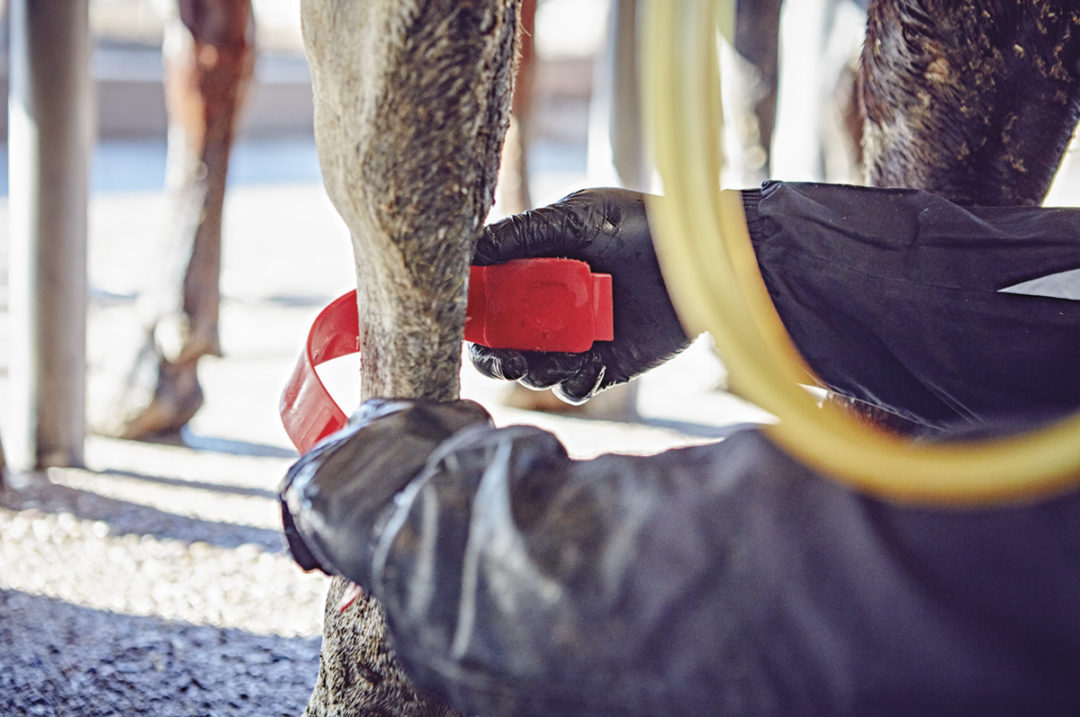The conversation around antibiotic stewardship is not new for the dairy industry, but a recent change to antibiotic access is bringing a fresh breath back to the dialogue. The U.S. Food and Drug Administration (FDA) is implementing guidance that transitions medically important over-the-counter animal antibiotics to prescription status only no later than June 11, 2023.
Many producers have strong management practices in place, but evaluating protocols and fine-tuning when necessary is always a good idea. With the latest changes from FDA guidance, now is a great time for producers to connect with their veterinarians and review their antibiotic use. Here are four steps your dairy can take to fine-tune antibiotic treatment protocols.
1. Keep quality records
Using records to guide treatment plans is a good first step in making judicious antibiotic decisions. Knowing the start date and the duration of treatments is crucial when making subsequent treatment choices. Also, having the ability to track withdrawal periods effectively will ensure farm employees know when milk from treated cows can go back in the tank or when the cow can be culled.
Record-keeping is a great way to keep an operation economical. It is important to consider milk production, somatic cell count (SCC), pregnancy status and health events throughout lactation when making the decision of whether or not to treat a cow with antibiotics. As an example, if a cow has been treated several times for mastitis in the same quarter, she is unlikely to benefit from another treatment.
Having accurate historical records ready for veterinary visits will allow for constructive additions or alterations to a protocol. Important items to keep track of include date of treatment, reason for treatment, the treatment used, withholding time and who administered the treatment. Remember to identify the animal and record the treatment before it takes place.
2. Follow protocol
Putting cattle first is our number one priority, and when a member of the herd is sick, we naturally want to help them get better. When a cow has been treated with antibiotics, we may not always see immediate results. Sometimes, this leads us to want to re-treat before we have given the antibiotic enough time to work. In those instances, it is important to follow the product label and the protocols outlined by your veterinarian to avoid re-treating too soon or too often. A premature re-treatment not only results in unnecessary antibiotic use, but it is also costly for the producer and animal.
Cows like to stick to their routine, and disrupting it unnecessarily can be stressful. Movements to and from the hospital pen can result in disruption of social hierarchies and daily routine. Producers can prevent unneeded stress on their animals by remaining strategic and thoughtful with re-treatments.
As for producers, time is extremely valuable. Taking extra time and resources to re-treat a cow prematurely is not the most economical plan of action. We recommend you stay patient and spend those dollars elsewhere.
3. Manage mastitis
Mastitis is one of the leading reasons dairy producers use antibiotics. By incorporating simple tools such as on-farm culturing and short-duration mastitis therapy, producers can cut antibiotic usage in both lactating and dry cows.
Not all types of mastitis infections need to be treated with antibiotics. On-farm culturing allows producers to know when an antibiotic treatment is indicated or not. It is valuable to know the three classifications of mastitis infections – gram-positive, gram-negative and no-growth – and the differences between them:
- Gram-positive infections are the ones we need to focus on with our antibiotic treatments. These mastitis infections are most likely to become chronic if left untreated and should be treated with a short-duration antibiotic labeled for gram-positive pathogens.
- Gram-negative and no-growth mastitis infections are cases in which an animal will likely not benefit from treatment. A no-growth case lets us know that the cow has cleared the infection on her own and will not need any antibiotics. Many mild to moderate gram-negative mastitis infections will self-cure, and providing an antibiotic treatment will make no difference in the outcome. However, it is important to work with your veterinarian to develop protocols that address supportive care for severe gram-negative cases.
With the help of culturing, producers can focus on only treating gram-positive cases and potentially reduce their antibiotic usage by two-thirds. Short-duration therapy is another tool producers can use in their antibiotic treatment protocols.
When a mastitis treatment is necessary, two-day or three-day treatment regimens have been shown to produce similar treatment outcomes when compared to a five-day treatment regimen. Short-duration therapy requires less labor and cost, decreases the amount of discarded milk, reduces a cow’s time spent in the hospital pen and, overall, decreases the length of antibiotic treatment without sacrificing treatment efficacy. Short-duration therapy is a winning solution for cows, producers and consumers.
4. Train employees
Taking the time to properly train employees creates an opportunity for teamwork and greater understanding. It is great practice to train a new employee at the start of their job, but there is also opportunity for communication and learning past their first week. Regularly retraining and reviewing protocols at least twice a year with team members is where we make a real difference in managing antibiotic usage.
Here are a few critical control points that can improve thoughtful antibiotic use among employees:
- Understanding product labels, dosages and treatment duration
- Accurate and prompt identification of clinically ill animals
- Proper drug administration routes and techniques
- Accurate record-keeping
- Recognizing the need for withdrawal times
- Deep understanding of why antibiotic management matters
By having regular trainings with employees, we can reinforce the importance of proper handling and management of antibiotics.
Your veterinarian is the greatest resource when looking to sharpen these best practices and skills on your farm – especially given the FDA’s recent guidance transitioning medically important over-the-counter animal antibiotics to prescription status. With this change, you will need a veterinary-client-patient relationship with a local veterinarian in order to purchase antibiotics moving forward.
Visit fda.gov to learn more about Guidance of Industry #263 and what it means for your operation.







